Llanfyllin, Montgomeryshire
Up to 1834
Meifod had a workhouse, which in 1776, could house eight inmates. In the same year, a workhouse at Llanfyllin had ten places. A half-timbered building on Coed Llan Lane, now a private residence, was once home to the establishment.
In 1766, Llanrhaiadr-yn-Mochnant established a workhouse whose inmates worked in spinning wool, hemp and flax, and dined on bread and cheese.
Guilsfield once operated a workhouse on the High Street in Welshpool. In the same parish, there was once a workhouse at Groes-lwyd.
After 1834
Llanfyllin Poor Law Union formally came into existence on 15th February, 1837. Its operation was overseen by an elected Board of Guardians, 27 in number, representing its 23 constituent parishes as listed below (figures in brackets indicate numbers of Guardians if more than one):
Montgomery:
Garthbeibio, Hirnant, Llandisilio, Llandrinio, Llanerfyl, Llanfair Caereinion (3), Llanfechan, Llanfihangel, Llanfyllin (2), Llangadfan, Llangyniew, Llangynog, Llanrhaidr yn Mochant, Llansaintffraed in the Hundred of Deythur, Llansaintffraed in the Hundred of Pool, Llanwyddyn with Cowny, Myfod (2), Pennant.
Denbigh:
Carreghova, Llanarmon mynidd Mawr, Llancadwallader, Llangedwyn, Llanrhaidr yn Mochant.
The population falling within the Union at the 1831 census had been 19,537 with parishes ranging in size from Llanarmon mynidd Mawr (population 164) to Llanfair Careinion (2,687). The average annual poor-rate expenditure for the period 1834-36 had been £8,497 or 8s.8d. per head of the population.
A new union workhouse which became known as "Y Dolydd" was erected in 1838 at the south-east of the town. In the same year, opposition to the new workhouse system in the area led to a mob setting out from Llanfair Caerinion to destroy the building but the Montgomeryshire Yeomanry prevented this.
The new workhouse was designed by the County Surveyor, Thomas Penson. The Poor Law Commissioners authorised an expenditure of £5,267.10s. on construction of the building which was intended to accommodate 250 inmates. The layout of the workhouse followed the popular cruciform or "square" plan published by the Commissioners in 1835.
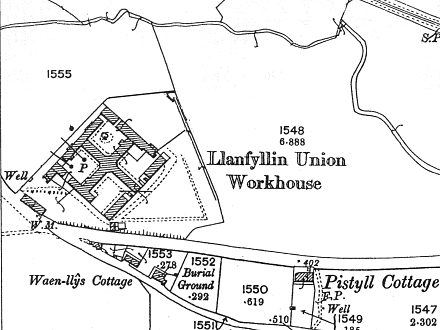
Llanfyllin Workhouse site, 1901.
At the centre was a supervisory hub from which radiated separate accommodation blocks for each of the different classes of inmate.
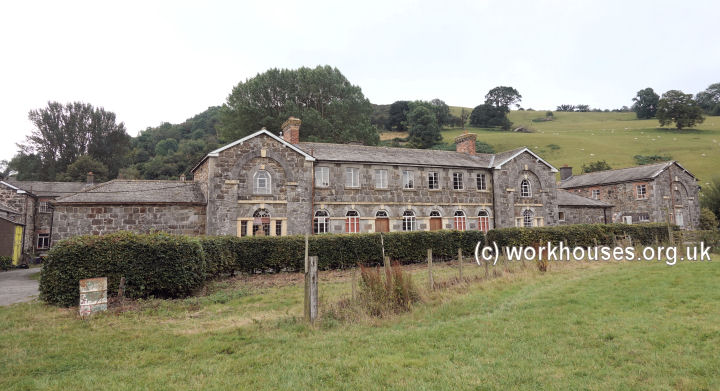
Llanfyllin workhouse general view from the north, 2021.
© Peter Higginbotham.
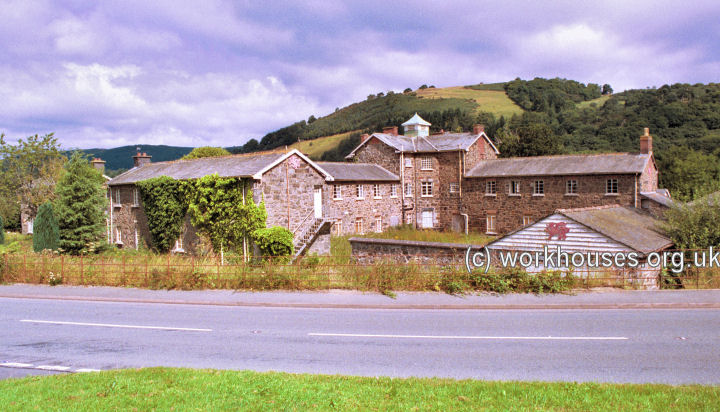
Llanfyllin workhouse general view from the south, 2000.
© Peter Higginbotham.
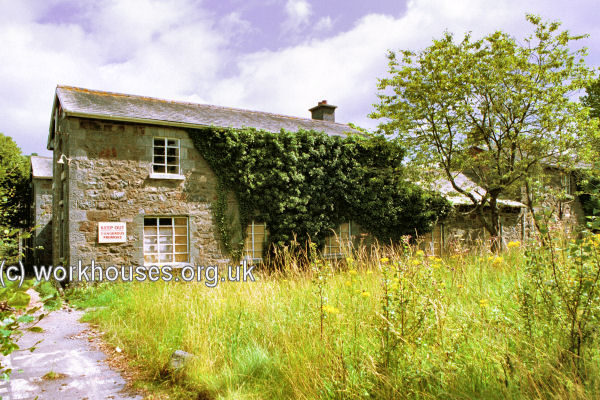
Llanfyllin from the south-west, 2000.
© Peter Higginbotham.
The workhouse Master's quarters were in the hub and its windows were arranged to provide good views in all directions. The areas between the wings were used as segregated exercise yards for the inmates, although the west yard appears to have been used as the Master's garden.
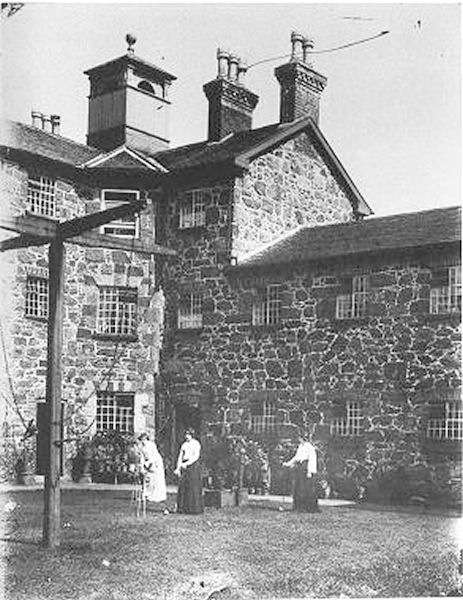
Llanfyllin workhouse west yard, date unknown.
Courtesy of J Bowen.
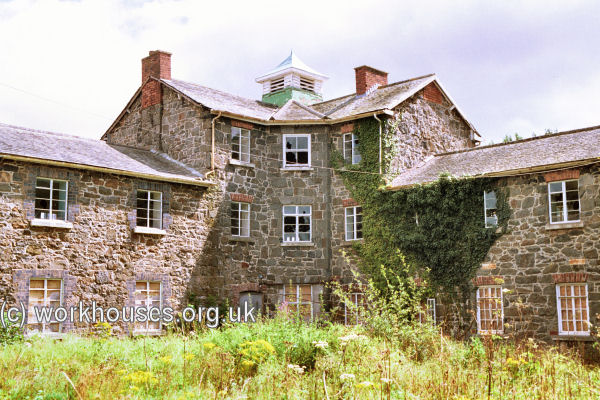
Llanfyllin west yard, 2000.
© Peter Higginbotham.
The north-west side of the workhouse which faced back towards the town had a rather more elegant appearance than the rest of the workhouse and featured round-headed Venetian windows.
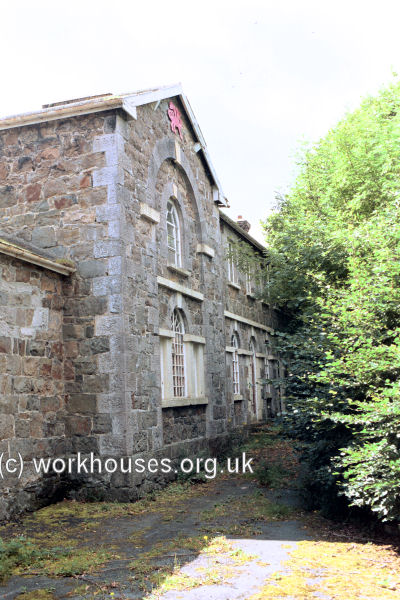
Llanfyllin workhouse north-west side from the north, 2000.
© Peter Higginbotham.
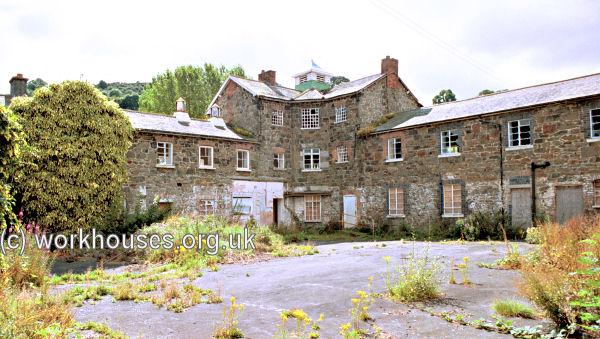
Llanfyllin workhouse north yard, 2000.
© Peter Higginbotham.
A garden party, perhaps to mark a Master's retirement, gives a rare group portrait of staff and inmates.
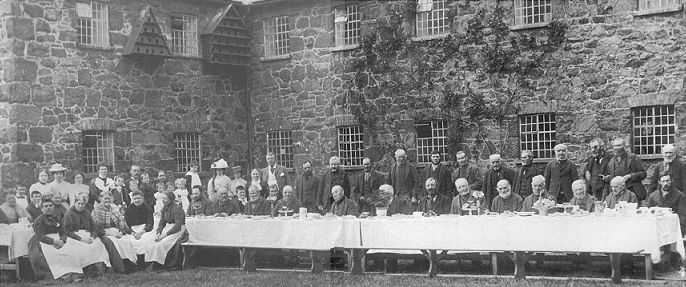
Llanfyllin workhouse garden party in south yard, date unkown.
Courtesy of J Bowen.
The Board of Guardians who ran the union met for the last time when the workhouse system came to an end in 1930.
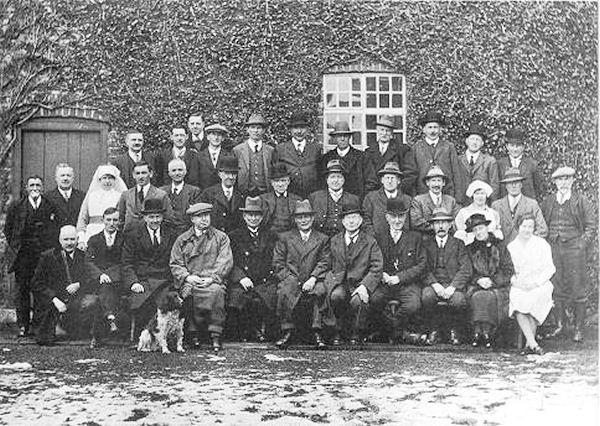
Llanfyllin Board of Guardians, c.1930.
Courtesy of J Bowen.
Across the road from the workhouse was a small cemetery in which most deceased inmates would be buried in unmarked graves.
The workhouse later became an old people's home called The Meadows (the English for Y Dolydd). From 1966 until its final closure in 1982, it was managed by Mr and Mrs Bowen.
A scheme to turn the buildings into an activity centre was abandoned following the death of its then owner in an accident at the time of its opening. By 2000, the buildings were lying empty and overgrown. The building was then acquired for development into a business centre but after featuring in the 2004 series of the BBC's Restoration programme, ownership passed to the Llanfyllin Dolydd Building Preservation Trust, which planned to become "a leading force in the integration of education, arts, entertainment, and employment using a holistic and sustainable approach based upon sound social and environmental principles."
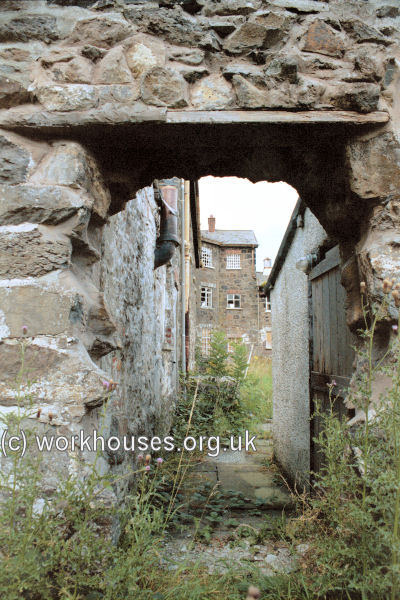
Former Llanfyllin workhouse, 2000.
© Peter Higginbotham.
In 2016, the Workhouse History Centre — Wales's only workhouse museum mdash; was opened in part of the building.
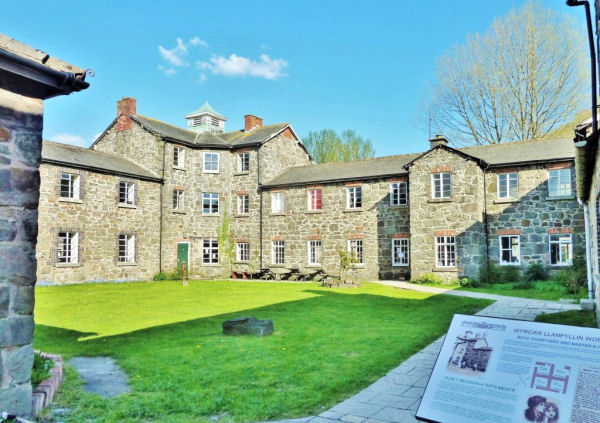
Llanfyllin Workhouse south yard, 2016.
© John Hainsworth.
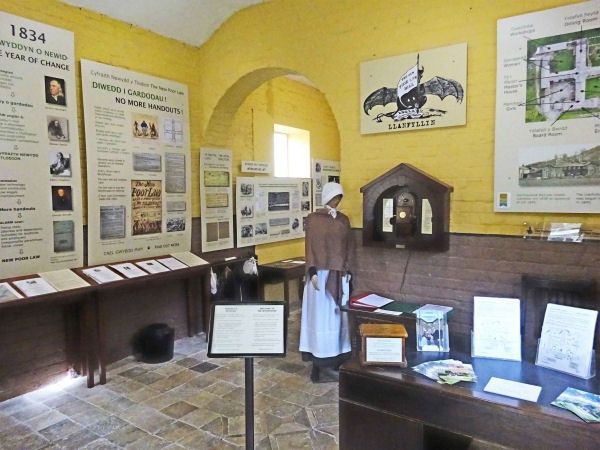
Llanfyllin Workhouse History Centre.
© John Hainsworth.
In 2021, the workhouse featured in Channel 4's The Great British Dig. Presenter Hugh Dennis tried his hand at stone-breaking — a task that was given to vagrants staying overnight in the workhouse casual ward.
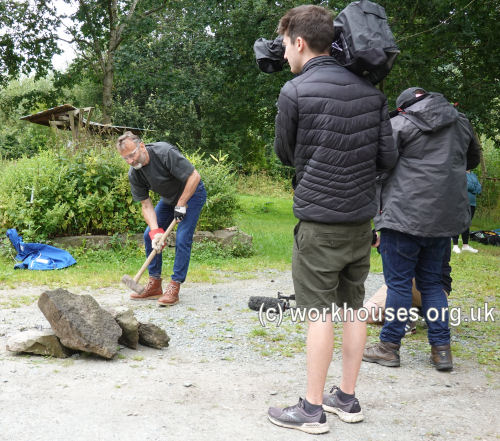
Llanfyllin Workhouse - the Great British Dig, 2021.
© Peter Higginbotham.
Staff
- 1881 Census for Llanfyllin workhouse.
Inmates
- Long-term workhouse inmates (1861)
- 1881 Census for Llanfyllin workhouse.
Records
Note: many repositories impose a closure period of up to 100 years for records identifying individuals. Before travelling a long distance, always check that the records you want to consult will be available.
- Powys County Archives Office, Unit 29, Ddole Road Enterprise Park, Llandrindod, LD1 6DF. Holdings include: Guardians' minute books (1841-1930); Ledgers (1861-1930); Register of inmates (1885-1974); Births (1914-41); Deaths (1914-72); Creed Registers (1909-39); etc.
Bibliography
- Hainsworth, John The Llanfyllin Union Workhouse (2004).
- Kretchmer, Richard Llanfyllin — a Pictorial History (1992, Powysland Club / Llanfyllin & District Civic Society).
- Ward, Frances and Hainsworth, John, Masters and Matrons of the Llanfyllin Union Workhouse 1839-1982 (2021, Llanfyllin Dolydd Building Preservation Trust). Copies (£9.50+p&p) available from Llanfyllin Library, or from Frances Ward via the Order form.
- NEW! Workhouses of Wales and the Welsh Borders. The story of the workhouse across the whole of Wales and the border counties of Cheshire, Gloucestershire, Herefordshire and Shropshire. More...
Links
- Llanfyllin Workhouse website
- Powys Digital History Project
- The union's early correspondence with the central Poor Law authorities is online on the TNA website .
Acknowledgement
- Thanks to Mr and Mrs Bowen for Llanfyllin pictures
Unless otherwise indicated, this page () is copyright Peter Higginbotham. Contents may not be reproduced without permission.


